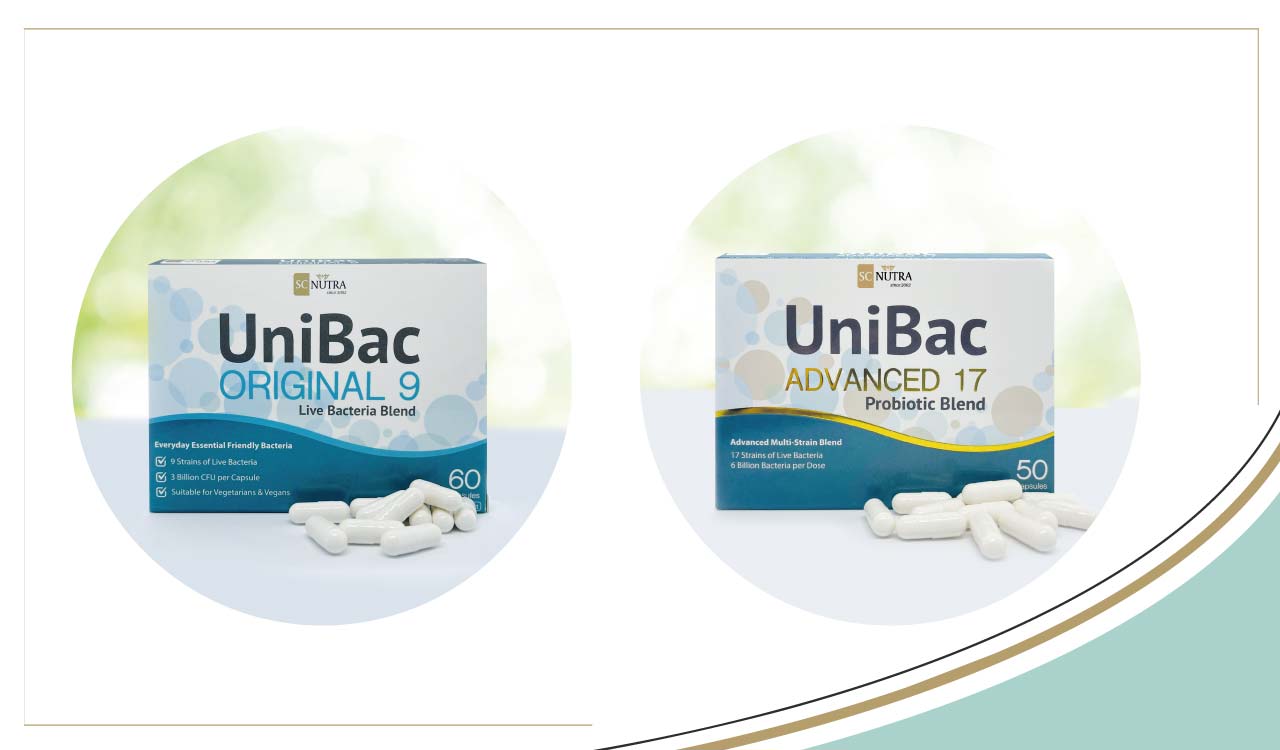Lactobacillus rhamnosus GG - Clinical Studies

In the landscape of scientific inquiry, few probiotic strains have garnered as much attention and investigation as Lactobacillus rhamnosus GG. With a plethora of studies spanning various disciplines and health domains, this probiotic strain has emerged as a focal point for researchers and health enthusiasts alike. From gut health to immune modulation, and from childhood well-being to adult resilience, the numerous studies dedicated to exploring the potential benefits of Lactobacillus rhamnosus GG have paved the way for a comprehensive understanding of its multifaceted impact. This article displays the diverse array of studies surrounding Lactobacillus rhamnosus GG, shedding light on the wealth of knowledge amassed and the potential implications for human health and wellness.
Digestive Health
1. Alander et al. (1999, Jan). Persistence of colonization of human colonic mucosa by a probiotic strain, Lactobacillus rhamnosus GG, after oral consumption. Applied and Environmental Microbiology, 65(1), 351-4.
2. Armuzzi et al. (2001). Effect of Lactobacillus GG supplementation on antibiotic-associated gastrointestinal side-effects during Helicobacter pylori eradication therapy: a pilot study. Digestion, 63(1), 1-7.
3. Armuzzi et al. (2001, Feb). The effect of oral administration of Lactobacillus GG on antibiotic-associated gastrointestinal side effects during Helicobacter pylori eradication therapy. Alimentary Pharmacology Therapeutics, 15(2), 163-9.
4. Arvola et al. (1999, Nov).* Prophylactic Lactobacillus GG reduces antibiotic- associated diarrhea in children with respiratory infections: a randomized study. Pediatrics, 104(5), e64.
5. Basu et al. (2007, Sep). Effect of Lactobacillus rhamnosus GG in persistent diarrhea in Indian children: a randomized controlled trial. Journal of Clinical Gastroenterology, 41(8), 756-60.
6. Basu et al. (2009, Mar). Efficacy of high-dose Lactobacillus rhamnosus GG in controlling acute watery diarrhea in Indian children: a randomized controlled trial. Journal of Clinical Gastroenterology, 43(3), 208-13.
7. Basu et al. (2007, Dec). Efficacy of Lactobacillus rhamnosus GG in acute watery diarrhoea of Indian children: a randomised controlled trial. Journal of Paediatrics and Child Health, 43(12), 837-42.
8. Biller et al. (1995, Aug). Treatment of recurrent Clostridium difficile colitis with Lactobacillus GG. Journal of Pediatric Gastroenterology and Nutrition, 21(2), 224-6.
9. Bousvaros et al. (2005). A randomized, double-blind trial of Lactobacillus GG versus placebo in addition to standard maintenance therapy for children with Crohn's disease. Inflammatory Bowel Diseases, 11(9), 833-839.
10. Canani et al. (2007, Aug 18). Probiotics for treatment of acute diarrhoea in children: randomised clinical trial of five different preparations. BMJ, 335(7615), 340.
11. Cremonini et al. (2002, Nov). Effect of different probiotic preparations on anti- Helicobacter pylori therapy-related side effects: a parallel group, triple blind, placebo-controlled study. The American Journal of Gastroenterology, 97(11), 2744-49.
12. Doron et al. (2015). Effect of Lactobacillus rhamnosus GG Administration on Vancomycin-Resistant Enterococcus Colonization in Adults with Comorbidities. Antimicrobial Agents and Chemotherapy, 59(8), 4593-4599.
13. Galpin et al. (2005, Nov). Effect of Lactobacillus GG on intestinal integrity in Malawian children at risk of tropical enteropathy. The American Journal of Clinical Nutrition, 82(5), 1040-5.
14. Gawrońska et al. (2007, Jan 15). A randomized double-blind placebo- controlled trial of Lactobacillus GG for abdominal pain disorders in children. Alimentary Pharmacology & Therapeutics, 25(2), 177-184.
15. Goldin et al. (1992, Jan). Survival of Lactobacillus species (strain GG) in human gastrointestinal tract. Digestive Diseases and Science, 37(1), 121-128.
16. Gorbach et al. (1987, Dec 26). Successful treatment of relapsing Clostridium difficile colitis with Lactobacillus GG. Lancet, 2(8574), 1519.
17. Gorshein et al. (2017). Lactobacillus rhamnosus GG probiotic enteric regimen does not appreciably alter the gut microbiome or provide protection against GVHD after allogeneic hematopoietic stem cell transplantation. Clinical Transplantation, 31(5).
18. Gosselink et al. (2004). Delay of the first onset of pouchitis by oral intake of the probiotic strain Lactobacillus rhamnosus GG. Diseases of the Colon and Rectum, 47(6), 876-884.
19. Guandalini et al. (2000, Jan). Lactobacillus GG administered in oral rehydration solution to children with acute diarrhea: a multicenter European trial. Journal of Pediatric Gastroenterology and Nutrition, 30(1), 54-60.
20. Guarino et al. (1997, Nov).* Oral bacterial therapy reduces the duration of symptoms and of viral excretion in children with mild diarrhea. Journal of Pediatric Gastroenterology and Nutrition, 25(5), 516-519.
21. Gupta et al. (2000, Oct). Is Lactobacillus GG helpful in children with Crohn's disease? Results of a preliminary, open-label study. Journal of Pediatric Gastroenterology and Nutrition, 31(4), 453-7.
22. Hibberd et al. (2014). No evidence of harms of probiotic Lactobacillus rhamnosus GG ATCC 53103 in healthy elderly-a phase I open label study to assess safety, tolerability and cytokine responses. PloS One, 9(12), e113456.
23. Hilton et al. (1997, Mar 1). Efficacy of Lactobacillus GG as a Diarrheal Preventive in Travelers. Journal of Travel Medicine, 4(1), 41-43.
24. Hojsak et al. (2010, May).* Lactobacillus GG in the prevention of nosocomial gastrointestinal and respiratory tract infections. Pediatrics, 125(5), e1171-7.
25. Hongisto et al. (2006, Mar). A combination of fibre-rich rye bread and yoghurt containing Lactobacillus GG improves bowel function in women with self-reported constipation. European Journal of Clinical Nutrition, 60(3), 319-24.
26. Isolauri et al. (1991, Jul).* A human Lactobacillus strain (Lactobacillus casei sp strain GG) promotes recovery from acute diarrhea in children. Pediatrics, 88(1), 90-7.
27. Isolauri et al. (1995, Feb).* Improved immunogenicity of oral D x RRV reassortant rotavirus vaccine by Lactobacillus casei GG. Vaccine, 13(3), 310-2.
28. Isolauri et al. (1994, Dec).* Oral bacteriotherapy for viral gastroenteritis. Digestive Diseases and Sciences, 39(12), 2595-2600.
29. Kaila et al. (1992, Aug).* Enhancement of the circulating antibody secreting cell response in human diarrhea by a human Lactobacillus strain. Pediatric Research, 32(2), 141-4.
30. Khodadad et al. (2013). Probiotics for the Treatment of Pediatric Helicobacter Pylori Infection: A Randomized Double Blind Clinical Trial. Iranian Journal of Pediatrics, 23(1), 79-84.
31. Korpela et al. (2016).* Lactobacillus rhamnosus GG Intake Modifies Preschool Children's Intestinal Microbiota, Alleviates Penicillin-Associated Changes, and Reduces Antibiotic Use. PloS One, 11(4), e0154012.
32. Kuisma et al. (2003, Feb 15). Effect of Lactobacillus rhamnosus GG on ileal pouch inflammation and microbial flora. Alimentary Pharmacology Therapeutics, 17(4), 509-515.
33. Kwon et al. (2015). Randomized Controlled Trial to Determine the Impact of Probiotic Administration on Colonization With Multidrug-Resistant Organisms in Critically Ill Patients. Infection Control and Hospital Epidemiology, 36(12), 1451-1454.
34. Oberhelman et al. (1999, Jan). A placebo- controlled trial of Lactobacillus GG to prevent diarrhea in undernourished Peruvian children. The Journal of Pediatrics, 134(1), 15-20.
35. Oksanen et al. (1990, Feb). Prevention of traveller's diarrhoea by Lactobacillus GG. Annals of Medicine, 22(1), 53-6.
36. Pant et al. (1996, Jun). Lactobacillus GG and acute diarrhoea in young children in the tropics. Journal of Tropical Pediatrics, 42(3), 162-5.
37. Pieścik-Lech et al. (2013). Lactobacillus GG (LGG) and smectite versus LGG alone for acute gastroenteritis: a double-blind, randomized controlled trial. European Journal of Pediatrics, 172(2), 247-253.
38. Prantera et al. (2002, Sep). Ineffectiveness of probiotics in preventing recurrence after curative resection for Crohn's disease: a randomised controlled trial with Lactobacillus GG. Gut, 51(3), 405-9.
39. Rautanen et al. (1998, Aug). Management of acute diarrhoea with low osmolarity oral rehydration solutions and Lactobacillus strain GG. Archives of Disease in Childhood, 79(2), 157-160.
40. Raza et al. (1995, Feb). Lactobacillus GG promotes recovery from acute nonbloody diarrhea in Pakistan. The Pediatric Infectious Disease Journal, 14(2), 107-11.
41. Ritchie et al. (2010). Efficacy of Lactobacillus GG in aboriginal children with acute diarrhoeal disease: a randomised clinical trial. Journal of Pediatric Gastroenterology and Nutrition, 50(6), 619-624.
42. Saxelin et al. (1991). Dose response colonisation of faeces after oral administration of Lactobacillus casei strain GG. Microbial Ecology Health & Disease, 4(4), 209-214.
43. Saxelin et al. (1993). Dose response on the faecal colonisation of Lactobacillus strain GG administered in two different formulations. Microbial Ecology Health and Disease, 6(3), 119-122.
44. Sentongo et al. (2008, Jan). Intestinal permeability and effects of Lactobacillus rhamnosus therapy in children with short bowel syndrome. Journal of Pediatric Gastroenterology Nutrition, 46(1), 41-7.
45. Shornikova et al. (1997, May).* A trial in the Karelian Republic of oral rehydration and Lactobacillus GG for treatment of acute diarrhoea. Acta Paediatrica, 86(5), 460-5.
46. Siitonen et al. (1990, Feb). Effect of Lactobacillus GG yoghurt in prevention of antibiotic associated diarrhoea. Annals of Medicine, 22(1), 57-9.
47. Sindhu et al. (2014).* Immune response and intestinal permeability in children with acute gastroenteritis treated with Lactobacillus rhamnosus GG: a randomized, double-blind, placebo-controlled trial. Clinical Infectious Diseases, 58(8), 1107-1115.
48. Solano-Aguilar et al. (2016). Transcriptomic Profile of Whole Blood Cells from Elderly Subjects Fed Probiotic Bacteria Lactobacillus rhamnosus GG ATCC 53103 (LGG) in a Phase I Open Label Study. PloS One, 11(2), e0147426.
49. Szajewska et al. (2001, Mar).* Efficacy of Lactobacillus GG in prevention of nosocomial diarrhea in infants. The Journal of Pediatrics, 138(3), 361-5.
50. Szajewska et al. (2007, Apr 15). Meta- analysis: Lactobacillus GG for treating acute diarrhoea in children. Alimentary Pharmacology & Therapeutics, 25(8), 871-81.
51. Szajewska et al. (2009, Apr). Randomized, double-blind, placebo-controlled trial: effect of Lactobacillus GG supplementation on Helicobacter pylori eradication rates and side effects during treatment in children. Journal of Pediatric Gastroenterology and Nutrition, 48(4), 431-6.
52. Thomas et al. (2001, Sep). Lack of effect of Lactobacillus GG on antibiotic- associated diarrhea: a randomized, placebo-controlled trial. Mayo Clinic Proceedings, 76(9), 883-9.
53. Vanderhoof et al. (1999, Nov). Lactobacillus GG in the prevention of antibiotic-associated diarrhea in children. The Journal of Pediatrics, 135(5), 564-8.
54. Zocco et al. (2006). Efficacy of Lactobacillus GG in maintaining remission of ulcerative colitis. Alimentary Pharmacology & Therapeutics, 23(11), 1567-1574.
Immune Health
1. Arvola et al. (1999, Nov).* Prophylactic Lactobacillus GG reduces antibiotic- associated diarrhea in children with respiratory infections: a randomized study. Pediatrics, 104(5), e64.
2. Berni Canani et al. (2017). Extensively hydrolyzed casein formula containing Lactobacillus rhamnosus GG reduces the occurrence of other allergic manifestations in children with cow's milk allergy: 3-year randomized controlled trial. The Journal of Allergy and Clinical Immunology, 139(6), 1906-1913.e4.
3. Berni Canani et al. (2013). Formula selection for management of children with cow's milk allergy influences the rate of acquisition of tolerance: a prospective multicenter study. The Journal of Pediatrics, 163(3), 771-777.e1.
4. Braat et al. (2004, Dec). Lactobacillus rhamnosus induces peripheral hyporesponsiveness in stimulated CD4+ T cells via modulation of dendritic cell function. The American Journal of Clinical Nutrition, 80(6), 1618-25.
5. Brouwer et al. (2006). No effects of probiotics on atopic dermatitis in infancy: a randomized placebo-controlled trial. Clinical and Experimental Allergy, 36(7), 899-906.
6. de Vrese et al. (2005, Oct). Probiotic bacteria stimulate virus-specific neutralizing antibodies following a booster polio vaccination. European Journal of Nutrition, 44(7), 406-13.
7. Di Caro et al. (2005, May). Effects of Lactobacillus GG on genes expression pattern in small bowel mucosa. Digestive and Liver Disease, 37(5), 320-9.
8. Fang et al. (2000, Sep). Modulation of humoral immune response through probiotic intake. FEMS Immunology and Medical Microbiology, 29(1), 47-52.
9. Fölster-Holst et al. (2006). Prospective, randomized controlled trial on Lactobacillus rhamnosus in infants with moderate to severe atopic dermatitis. The British Journal of Dermatology, 155(6), 1256-1261.
10. Grüber et al. (2007).* Randomized, placebo- controlled trial of Lactobacillus rhamnosus GG as treatment of atopic dermatitis in infancy. Allergy, 62(11), 1270-1276.
11. Guarino et al. (1997, Nov).* Oral bacterial therapy reduces the duration of symptoms and of viral excretion in children with mild diarrhea. Journal of Pediatric Gastroenterology and Nutrition, 25(5), 516-519.
12. Hatakka et al. (2001, Jun). Effect of long term consumption of probiotic milk on infections in children attending day care centres: double blind, randomised trial. BMJ, 322(7298), 1327.
13. Hojsak et al. (2010, Jun). Lactobacillus GG in the prevention of gastrointestinal and respiratory tract infections in children who attend day care centers: a randomized, double-blind, placebo-controlled trial. Clinical Nutrition, 29(3), 312-6.
14. Hojsak et al. (2010, May).* Lactobacillus GG in the prevention of nosocomial gastrointestinal and respiratory tract infections. Pediatrics, 125(5), e1171-7.
15. Isolauri et al. (1991, Jul).* A human Lactobacillus strain (Lactobacillus casei sp strain GG) promotes recovery from acute diarrhea in children. Pediatrics, 88(1), 90-7.
16. Isolauri et al. (1995, Feb).* Improved immunogenicity of oral D x RRV reassortant rotavirus vaccine by Lactobacillus casei GG. Vaccine, 13(3), 310-2.
17. Jerzynska et al. (2016). Effect of Lactobacillus rhamnosus GG and vitamin D supplementation on the immunologic effectiveness of grass-specific sublingual immunotherapy in children with allergy. Allergy and Asthma Proceedings, 37(4), 324-334.
18. Jung, L.K. (1999, Mar 15). Lactobacillus GG augments the immune response to typhoid vaccination: A double-blinded, placebo- controlled study. FASEB Journal, 13(5 Part 2), A872.
19. Kaila et al. (1992, Aug).* Enhancement of the circulating antibody secreting cell response in human diarrhea by a human Lactobacillus strain. Pediatric Research, 32(2), 141-4.
20. Kalliomäki et al. (2003, May 31). Probiotics and prevention of atopic disease: 4-year follow-up of a randomised placebo-controlled trial. Lancet, 361(9372), 1869-1871.
21. Kalliomäki et al. (2001, Apr 7).* Probiotics in primary prevention of atopic disease: a randomised placebo-controlled trial. Lancet, 357(9262), 1076-9.
22. Kankaanpää et al. (2002).* Influence of probiotic supplemented infant formula on composition of plasma lipids in atopic infants. The Journal of Nutritional Biochemistry, 13(6), 364-369.
23. Kankaanpää et al. (1998). Results on clinical demonstration of probiotics on children. Presented at Functional Food Research in Europe, Third Workshop, PROBDEMO: Finland.
24. Kekkonen et al. (2008, May 28). Effect of probiotic Lactobacillus rhamnosus GG intervention on global serum lipidomic profiles in healthy adults. World Journal of Gastroenterology, 14(20), 3188-94.
25. Kekkonen et al. (2007, Aug). The effect of probiotics on respiratory infections and gastrointestinal symptoms during training in marathon runners. International Journal of Sport Nutrition and Exercise Metabolism, 17(4), 352-363.
26. Kopp et al. (2008).* Lactobacillus GG has in vitro effects on enhanced interleukin-10 and interferon-gamma release of mononuclear cells but no in vivo effects in supplemented mothers and their neonates. Clinical and Experimental Allergy, 38(4), 602-610.
27. Korpela et al. (2016).* Lactobacillus rhamnosus GG Intake Modifies Preschool Children's Intestinal Microbiota, Alleviates Penicillin-Associated Changes, and Reduces Antibiotic Use. PloS One, 11(4), e0154012.
28. Kumpu et al. (2012). Milk containing probiotic Lactobacillus rhamnosus GG and respiratory illness in children: a randomized, double-blind, placebo- controlled trial. European Journal of Clinical Nutrition, 66(9), 1020-1023.
29. Lehtoranta et al. (2014). Specific probiotics and virological findings in symptomatic conscripts attending military service in Finland. Journal of Clinical Virology, 60(3), 276-281.
30. Licciardi et al. (2013).* Maternal Supplementation with LGG Reduces Vaccine-Specific Immune Responses in Infants at High-Risk of Developing Allergic Disease. Frontiers in Immunology, 4, 381.
31. Luoto et al. (2014).* Prebiotic and probiotic supplementation prevents rhinovirus infections in preterm infants: a randomized, placebo-controlled trial. The Journal of Allergy and Clinical Immunology, 133(2), 405-413.
32. Malin et al. (1997). Dietary therapy with Lactobacillus GG, bovine colostrum or bovine immune colostrum in patients with juvenile chronic arthritis: evaluation of effect on gut defence mechanisms. Inflammopharmacology, 5(3), 219-36.
33. Morrow et al. (2010). Probiotic prophylaxis of ventilator-associated pneumonia: a blinded, randomized, controlled trial. American Journal of Respiratory and Critical Care Medicine, 182(8), 1058-1064.
34. Muraro et al. (2012). Extensively hydrolysed casein formula supplemented with Lactobacillus rhamnosus GG maintains hypoallergenic status: randomised double- blind, placebo-controlled crossover trial. BMJ Open, 2(2), e000637.
35. Nermes et al. (2011).* Interaction of orally administered Lactobacillus rhamnosus GG with skin and gut microbiota and humoral immunity in infants with atopic dermatitis. Clinical and Experimental Allergy, 41(3), 370-377.
36. Pelto et al. (1998, Dec). Probiotic bacteria down-regulate the milk-induced inflammatory response in milk-hypersensitive subjects but have an immunostimulatory effect in healthy subjects. Clinical and Experimental Allergy, 28(12), 1474-1479.
37. Pessi et al. (2000, Dec). Interleukin-10 generation in atopic children following oral Lactobacillus rhamnosus GG. Clinical and Experimental Allergy, 30(12), 1804-8.
38. Rose et al. (2010). Efficacy of probiotic Lactobacillus GG on allergic sensitization and asthma in infants at risk. Clinical and Experimental Allergy, 40(9), 1398-1405.
39. Schultz et al. (2003, May). Immunomodulatory consequences of oral administration of Lactobacillus rhamnosus strain GG in healthy volunteers. The Journal of Dairy Research, 70(2), 165-73.
40. Shornikova et al. (1997, May).* A trial in the Karelian Republic of oral rehydration and Lactobacillus GG for treatment of acute diarrhoea. Acta Paediatrica, 86(5), 460-5.
41. Sindhu et al. (2014).* Immune response and intestinal permeability in children with acute gastroenteritis treated with Lactobacillus rhamnosus GG: a randomized, double-blind, placebo- controlled trial. Clinical Infectious Diseases, 58(8), 1107-1115.
42. Szajewska et al. (2001, Mar).* Efficacy of Lactobacillus GG in prevention of nosocomial diarrhea in infants. The Journal of Pediatrics, 138(3), 361-5.
43. Tapiovaara et al. (2016). Human rhinovirus in experimental infection after peroral Lactobacillus rhamnosus GG consumption, a pilot study. International Forum of Allergy & Rhinology, 6(8), 848-853.
Obesity
1. Luoto et al. (2010, Oct).* The impact of perinatal probiotic intervention on the development of overweight and obesity: follow-up study from birth to 10 years. International Journal of Obesity, 34(10), 1531-1537.
2. Vajro et al. (2011). Effects of Lactobacillus rhamnosus strain GG in pediatric obesity-related liver disease. Journal of Pediatric Gastroenterology and Nutrition, 52(6), 740-743.
Oral Health
1. Hatakka et al. (2007, Feb). Probiotics reduce the prevalence of oral candida in the elderly - a randomized controlled trial. Journal of Dental Research, 86(2), 125-30.
2. Kumpu et al. (2013). Recovery of probiotic Lactobacillus rhamnosus GG in tonsil tissue after oral administration: randomised, placebo-controlled, double-blind clinical trial. The British Journal of Nutrition, 109(12), 2240-2246.
3. Näse et al. (2001, Nov-Dec). Effect of long- term consumption of a probiotic bacterium, Lactobacillus rhamnosus GG, in milk on dental caries and caries risk in children. Caries Research, 35(6), 412-420.
4. Swanljung et al. (2015). Lactobacillus rhamnosus GG in adenoid tissue: Double- blind, placebo-controlled, randomized clinical trial. Acta Oto-Laryngologica, 135(8), 824-830.
Pregnancy & Infants
1. Agarwal et al. (2003). Effects of oral Lactobacillus GG on enteric microflora in low-birth-weight neonates. Journal of Pediatric Gastroenterology and Nutrition, 36(3), 397-402.
2. Biadaioli et al. (1998). An attempt to reduce premature infant infections in intensive care units by means of Lactobacillus GG. Gastroenterology International, 11(Suppl 1), 135-136.
3. Dani et al. (2016, Mar). Lactobacillus Sepsis and Probiotic Therapy in Newborns: Two New Cases and Literature Review. American Journal of Perinatology Reports, 6(1), e25-29.
4. Dani et al. (2002). Probiotics feeding in prevention of urinary tract infection, bacterial sepsis and necrotizing enterocolitis in preterm infants. A prospective double-blind study. Biology of the Neonate, 82(2), 103-108.
5. De Groote et al. (2005). Lactobacillus rhamnosus GG bacteremia associated with probiotic use in a child with short gut syndrome. The Pediatric Infectious Disease Journal, 24(3), 278-280.
6. Grüber et al. (2007).* Randomized, placebo-controlled trial of Lactobacillus rhamnosus GG as treatment of atopic dermatitis in infancy. Allergy, 62(11), 1270-1276.
7. Gueimonde et al. (2006, Feb). Effect of maternal consumption of Lactobacillus GG on transfer and establishment of fecal bifidobacterial microbiota in neonates. Journal of Pediatric GastroenterolOgy and Nutrition, 42(2), 166-70.
8. Isolauri et al. (1991, Jul).* A human Lactobacillus strain (Lactobacillus casei sp strain GG) promotes recovery from acute diarrhea in children. Pediatrics, 88(1), 90-7.
9. Isolauri et al. (1995, Feb).* Improved immunogenicity of oral D x RRV reassortant rotavirus vaccine by Lactobacillus casei GG. Vaccine, 13(3), 310-2.
10. Isolauri et al. (1994, Dec).* Oral bacteriotherapy for viral gastroenteritis. Digestive Diseases and Sciences, 39(12), 2595-2600.
11. Kaila et al. (1992, Aug).* Enhancement of the circulating antibody secreting cell response in human diarrhea by a human Lactobacillus strain. Pediatric Research, 32(2), 141-4.
12. Kalliomäki et al. (2001, Apr 7).* Probiotics in primary prevention of atopic disease: a randomised placebo-controlled trial. Lancet, 357(9262), 1076-9.
13. Kankaanpää et al. (2002).* Influence of probiotic supplemented infant formula on composition of plasma lipids in atopic infants. The Journal of Nutritional Biochemistry, 13(6), 364-369.
14. Kopp et al. (2008).* Lactobacillus GG has in vitro effects on enhanced interleukin-10 and interferon-gamma release of mononuclear cells but no in vivo effects in supplemented mothers and their neonates. Clinical and Experimental Allergy, 38(4), 602-610.
15. Kunz et al. (2004). Two cases of Lactobacillus bacteremia during probiotic treatment of short gut syndrome. Journal of Pediatric Gastroenterology and Nutrition, 38(4), 457-458.
16. Land et al. (2005). Lactobacillus sepsis associated with probiotic therapy. Pediatrics, 115(1), 178-181.
17. Licciardi et al. (2013).* Maternal Supplementation with LGG Reduces Vaccine- Specific Immune Responses in Infants at High-Risk of Developing Allergic Disease. Frontiers in Immunology, 4, 381.
18. Lundelin et al. (2017). Long-term safety and efficacy of perinatal probiotic intervention: Evidence from a follow-up study of four randomized, double-blind, placebo-controlled trials. Pediatric Allergy and Immunology, 28(2), 170-175.
19. Luoto et al. (2010, Aug). Incidence of necrotizing enterocolitis in very-low-birth- weight infants related to the use of Lactobacillus GG. Acta Paediatrica, 99(8), 1135-1138.
20. Luoto et al. (2014).* Prebiotic and probiotic supplementation prevents rhinovirus infections in preterm infants: a randomized, placebo-controlled trial. The Journal of Allergy and Clinical Immunology, 133(2), 405-413.
21. Luoto et al. (2010, Oct).* The impact of perinatal probiotic intervention on the development of overweight and obesity: follow-up study from birth to 10 years. International Journal of Obesity, 34(10), 1531-1537.
22. Manzoni et al. (2006, Jun). Oral supplementation with Lactobacillus casei subspecies rhamnosus prevents enteric colonization by Candida species in preterm neonates: a randomized study. Clinical Infectious Diseases, 42(12), 1735-42.
23. Manzoni et al. (2011). Routine Lactobacillus rhamnosus GG administration in VLBW infants: A retrospective, 6-year cohort study. Early Human Development, 87S(2011), S35-38.
24. Martin et al. (2016). Presumed Allergic Proctocolitis Resolves with Probiotic Monotherapy: A Report of 4 Cases. The American Journal of Case Reports, 17, 621-624.
25. Millar et al. (1993, Nov). Enteral feeding of premature infants with Lactobacillus GG. Archives of Disease in Childhood, 69(5 Spec No), 483-7.
26. Misra et al. (2009). A randomized controlled trial to evaluate the efficacy of Lactobacillus GG in infantile diarrhea. The Journal of Pediatrics, 155(1), 129-132.
27. Nermes et al. (2011).* Interaction of orally administered Lactobacillus rhamnosus GG with skin and gut microbiota and humoral immunity in infants with atopic dermatitis. Clinical and Experimental Allergy, 41(3), 370-377.
28. Pärtty et al. (2015, Jun). A possible link between early probiotic intervention and the risk of neuropsychiatric disorders later in childhood: a randomized trial. Pediatric Research, 77(6), 823-828.
29. Pärtty et al. (2013). Effects of early prebiotic and probiotic supplementation on development of gut microbiota and fussing and crying in preterm infants: a randomized, double-blind, placebo-controlled trial. The Journal of Pediatrics, 163(5), 1272-1277.e1-2.
30. Pärtty et al. (2015, Oct). Probiotic Lactobacillus rhamnosus GG therapy and microbiological programming in infantile colic: a randomized, controlled trial. Pediatric Research, 78(4), 470-475.
31. Petschow et al. (2003). Comparison of intestinal colonization and tolerance following oral administration of different levels of Lactobacillus rhamnosus strain GG (LGG) in healthy term infants. Journal of Pediatric Gastroenterology and Nutrition, 36(4), 566.
32. Petschow et al. (2005, Oct). Effects of feeding an infant formula containing Lactobacillus GG on the colonization of the intestine: a dose-response study in healthy infants. Journal of Clinical Gastroenterology, 39(9), 786-790.
33. Romeo et al. (2011). Role of probiotics in the prevention of the enteric colonization by Candida in preterm newborns: incidence of late-onset sepsis and neurological outcome. Journal of Perinatology, 31(1), 63-69.
34. Romeo et al. (2006). The role of probiotics in the prevention of bacterial infections and Candida in Neonatal Intensive Care. Prospective study with control groups. 12th National SIN Congress (Italian Neonatology Society).
35. Rougé et al. (2009). Oral supplementation with probiotics in very-low-birth-weight preterm infants: a randomized, double- blind, placebo-controlled trial. The American Journal of Clinical Nutrition, 89(6), 1828-1835.
36. Sepp et al. (1993). Effect of administration of Lactobacillus casei strain GG on the gastrointestinal microbiota of newborns. Microbial Ecology in Health and Disease, 6(6), 309-314.
37. Stansbridge et al. (1993, Nov). Effects of feeding premature infants with Lactobacillus GG on gut fermentation. Archives of Disease in Childhood, 69(5 Spec No), 488-92.
38. Szajewska et al. (2001, Mar).* Efficacy of Lactobacillus GG in prevention of nosocomial diarrhea in infants. The Journal of Pediatrics, 138(3), 361-5.
39. Uberos et al. (2017). Probiotics to prevent necrotising enterocolitis and nosocomial infection in very low birth weight preterm infants. The British Journal of Nutrition, 117(7), 994-1000.
40. Vendt et al. (2006, Feb). Growth during the first 6 months of life in infants using formula enriched with Lactobacillus rhamnosus GG: double-blind, randomized trial. Journal of Human Nutrition Dietetics, 19(1), 51-8.
 Free Shipping on orders $110+ AUD
Free Shipping on orders $110+ AUD
 Worldwide Delivery Available
Worldwide Delivery Available
 Read Thousands of Independent Reviews
Read Thousands of Independent Reviews


















